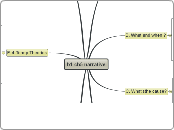b1 ch5 narrative
A. Introduction
Personality theories
Type
People are qualitativly differnt
the four humours
MBTI
Trait
people vary on certain dimesions
Eysencks EPI
Costa McCrae
Big 5
Temperament
Def.
(TempoSition) Disposition to act in particular ways accross time and situation not regarding the influence of cognition. Tought to be inherited.
B. What and when ?
Agreement on 3 broad categories
emotional
attentional
Motor activity
Important temperamental differences
and time of emergence (contrad. to def)
very early
Inhibition (s. Kagan)
very late
effortful Control (i.e. Rothbart)
inhibition to persue a goal
But: Other genetic factors like intelligence also only experess themselves later
variation accross time
stabilty
same behaviour over days or weeks
continuity
similar characteristics accross time
C. What'sthe cause?
Genetic origin
Buss& Plomins: Minnesota Twins correlation
sociability
activity
But: MZ often similar environm.
7r Dopamine Receptors
Auerbach: General:
Dopamine receptor assotiated
with temperamental differnces
Schmidt's: Older Kids
Problem with attention, risk taking and aggressive behaviour
MAOA(m) re-uptake
Caspi et al
Seronotine transporter: aggressive only with kids who been in abusive environment.
D. How stable is it
Short Term: high stability
Plomin: Colorado Adoption Project
high stability from 1-4
emotionality
sociability
less stability
activity
But: based on parental ratings (sim to previous)
Hinde & Tobin
4 y
assessment at home and in play group
"coherence of termperament" across contexts
Gender: behvioural differneces
Shy
G: better rel. w. mother
G. Less hostile w. peers
Long Term: clear relationship
Caspi et al: 1000 3y
cat in 5 Types
26
MPQ
self
Big 5
close friend
E. Methods
parental observations
good acces but biased
But: Hagekull: Good corrlation between partents reporst and direct observation
face to face Interviews
potentially more accurate
social desirealbilty or problems with understanding
F. 4 Termp Theories
Thomas&Chess'9
9 Dimesions
i.e distractibilty and attention span
But: Some factors possibly overlapping
Also 3 Types
difficult child(increased risk of later behvour problems)
mood
adaptabilty
rhythmicality
approach
slow to warm up
easy child
Bates& Bales: Mother problems
link of problem behav reported by mom at 2y with later 3-6y
But
Pauli&Potts: emotionality at 4 p
erceptios of emotionality at 4m predict measurement at 8
Vaughan's Uterus
Mothers formed a view before child was born: Ratings of temperament related to mothers personality and attitudes on child rearing
Kagen's inhibited child
Kagen found a type that shows strong behavioral inhibition i.e. to new things
75% stabilty
Linked with later problem behaviour
links this to arrousal level in the limbic system
change possible with concious effort
Bus and Plomin's EAS
EAS framwork
factor analysis
Emotinality/ Activiy / Sociability
Links well with Eysencks: EPI
Neuroticism
Extroversion
Dunn&Kendrick: jealousy
Importance of environment
siblings reaction to newborn not only related to temperament but quality and stability of interaction.
G. Temp and Development
(how genes and environment interact)
Scarr's PA 3 interations
passive: sharing char.
active: self selection
evocative: child evokes response
Direct effects
Keogh: in School
Factors like attention or impulisivity
Dunn & Kendrick
More stressed on arrival of sibling
self-selection of environments
Transactions
Goodness of fit
Isabella: caregiver personality not corr with child attachment but interaction is.
Sameroff: Transactions
influnencing behaviour of caregivers
